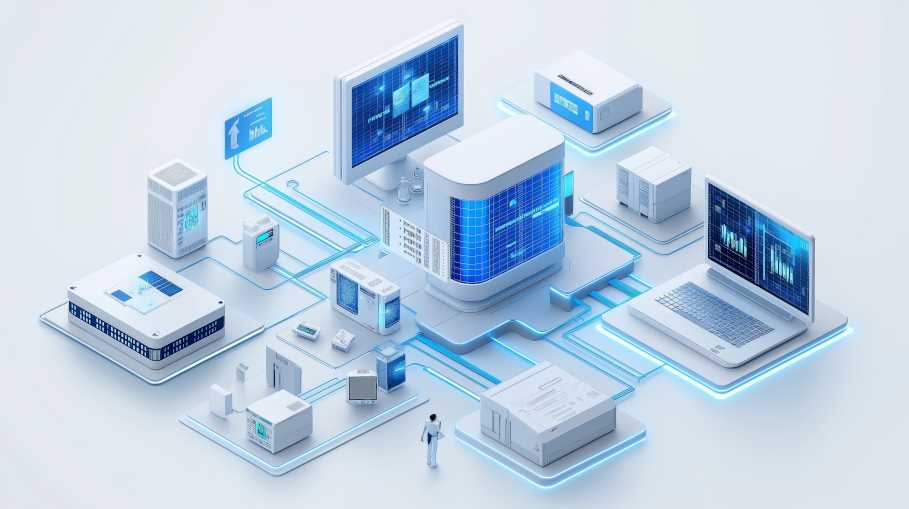Infrastructure Sovereignty: Why Physical Control Still Matters (Part 2)
10/08/2025 by Sebastian Ohlig

In the first part of this series, we defined IT sovereignty as the ability to control your digital assets under jurisdictions and protections you choose. This second part takes the discussion down to the foundations: infrastructure. Data centers, servers, and operational processes may look like commoditized utilities, but in the sovereignty debate, they are anything but.
When your critical infrastructure is operated under foreign legal authority, business continuity and compliance are no longer solely in your hands. Infrastructure sovereignty is therefore emerging as a board-level concern for international enterprises.
What Infrastructure Sovereignty Really Means
At its core, infrastructure sovereignty is about retaining ultimate control over the physical locations and operations of compute and storage systems. It’s not just knowing where your data sits, but who can walk into the data center, who has administrative access, and which laws govern those operators.
In practice, this often means favoring on-premises data centers or domestic colocation facilities or at least ensuring that operational processes remain shielded from foreign interference. Sovereignty here is not isolation; it is the ability to decide when foreign partnerships are acceptable and when local control is non-negotiable.
The Risks of Dependency
Relying on infrastructure owned or managed by foreign entities introduces concrete risks. A U.S.-based cloud or colocation provider operating servers in Europe remains subject to U.S. law, meaning authorities could compel access under the CLOUD Act.
Operational dependency is another concern. If core IT operations are outsourced to a vendor in a jurisdiction exposed to sanctions or geopolitical tensions, service continuity may be jeopardized without warning. The recent debate over whether satellite networks could be unilaterally switched off illustrates just how fragile this dependency can be.
Strategies for Sovereign Infrastructure
Enterprises have multiple levers to strengthen sovereignty:
- Domestic data centers: Hosting critical systems on company-owned or locally owned facilities maximizes control. Some national initiatives, such as France’s Cloud de Confiance, explicitly certify that infrastructure is insulated from non-EU legal reach.
- Legal and operational safeguards: Even when using international providers, contractual guarantees on data localization, staff vetting, and admin access can reduce risk.
- Encryption and key management: By retaining control of encryption keys locally, enterprises can ensure that even foreign infrastructure operators cannot access their data.
- Diversification and redundancy: Avoiding reliance on a single provider or jurisdiction ensures resilience. Critical workloads should always have a domestic fallback.
When Sovereignty Is Critical vs. Optional
Not all workloads require the same level of protection. For highly sensitive environments − government systems, defense, critical infrastructure − full sovereignty is often mandated by law. In contrast, for less sensitive workloads or public-facing services, strict sovereignty may be optional if the business benefits of foreign-hosted cloud outweigh the risks.
The practical outcome is usually hybrid: intellectual property and regulated personal data remain in sovereign environments, while less critical IT runs on global platforms with safeguards.
Acceptable Foreign Dependencies
True sovereignty does not mean cutting out all foreign technology. Most enterprises accept the use of foreign-manufactured hardware or standard software like VMware or Windows, as long as the enterprise retains operational control. Even partnerships with global hyperscalers can align with sovereignty goals if combined with client-side encryption, confidential computing, or independent key management.
In short, foreign components are acceptable when they operate on your terms. Sovereignty is not about isolation − it is about choice and the assurance that your most critical systems cannot be taken out of your hands.
The Essential Question
Infrastructure may feel like the most technical layer of sovereignty, but it is also the most tangible. If you cannot guarantee access to your own servers in a crisis, do you really control your IT?
As the debate continues, enterprises will need to decide where they draw the line between resilience, compliance, and efficiency. The answer will shape not only their infrastructure strategy, but also their long-term independence in an increasingly politicized digital economy.
What comes next?
In the next part of this series, we will examine cloud sovereignty − where jurisdictional control meets scalability and innovation.